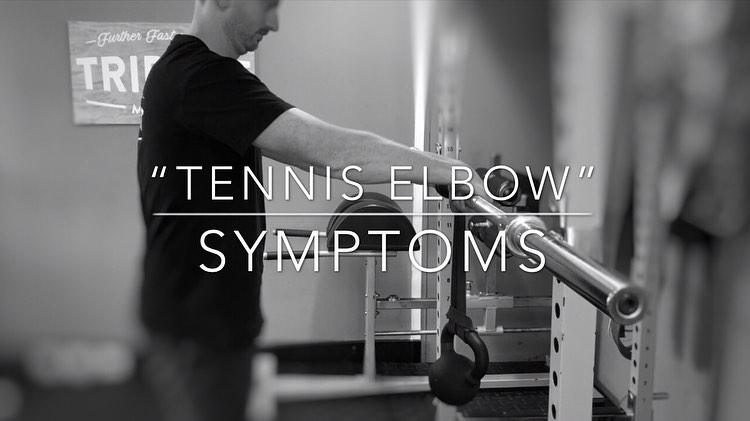Pain on the outside of the elbow?
Tennis elbow or “lateral epicondylopathy” refers to pain on the outside of the elbow. Often it is due to an overuse syndrome of the wrist extensor tendons. However, it is important to make sure pain is not being referred from a condition of the neck or shoulder. Pain is worse with repetitive movement and loaded tasks such as picking up objects, sports including tennis and weightlifting or computer use.
Initially treatment focuses around pain management. This may include a combination of analgesics, relative rest, bracing or taping and manual therapy such as massage and joint mobilisation or manipulation. Once pain is reduced, rehabilitation of the elbow should focus on improving upper limb strength, endurance and coordination. Exercises are often tailored to the specific pain level, needs and sports of the patient. Rehabilitation should then progress to more functional tasks and a return to activity as pain subsides.
Rehabilitation exercises for tennis elbow
LEVEL 1 |
- Isometric holds – Wrist extensor muscle contraction without any wrist movement allows for a controlled load onto the tendon. A crucial first step to settling pain and altering the collagen fibres.
- Eccentrics – Wrist extensor muscle contraction with wrist flexion movement only. Strengthening whilst stretching places the load on the tendon under tension changing the collagen fibres and making it less sensitive to stretch. The aim is to keep pain levels below a 4/10 to allow adaptation to occur at this stage.
- Concentric / Eccentrics – Wrist extensor contraction with both wrist flexion and extension movements to strengthen the tendon and fibres through their full range of motion.
LEVEL 2 |
- Bar roll downs – To eccentrically load the tendon over a greater range of motion whilst adding in grip strength.
- Bar roll ups to downs – Combining both movements to work on the endurance and capacity of the extensor tendons to contract over greater ranges of motion with minimal pain.
LEVEL 3 |
- Kettlebell bottoms up – To combine multi-planar movements and progress through to more functional tasks encountered throughout the day. This is an end stage rehab approach which aims to build overall resilience.
Rehabilitation exercises for tennis elbowLEVEL 1 |• Isometric holds – Wrist extensor muscle contraction without any wrist movement allows for a controlled load onto the tendon. A crucial first step to settling pain and altering the collagen fibres.• Eccentrics – Wrist extensor muscle contraction with wrist flexion movement only. Strengthening whilst stretching places the load on the tendon under tension changing the collagen fibres and making it less sensitive to stretch. The aim is to keep pain levels below a 4/10 to allow adaptation to occur at this stage.• Concentric / Eccentrics – Wrist extensor contraction with both wrist flexion and extension movements to strengthen the tendon and fibres through their full range of motion. LEVEL 2 |• Bar roll downs – To eccentrically load the tendon over a greater range of motion whilst adding in grip strength.• Bar roll ups to downs – Combining both movements to work on the endurance and capacity of the extensor tendons to contract over greater ranges of motion with minimal pain. LEVEL 3 |• Kettlebell bottoms up – To combine multi-planar movements and progress through to more functional tasks encountered throughout the day. This is an end stage rehab approach which aims to build overall resilience.
Posted by Trident Movement on Tuesday, October 22, 2019
Biomechanical considerations for tennis elbow
ERGONOMICS |
- An evaluation of both static and dynamic postures and movements can be helpful in getting to the root cause of tennis elbow, especially if these activities are triggering the elbow pain.
- Sometimes a simple change of positioning of the keyboard/mouse or an alteration to sport can make a significant difference to pain levels.
WRIST RANGE OF MOTION |
- The wrist extensor muscles act over both the wrist and elbow joints. Although the pain is felt at elbow the ‘problem’ may be elsewhere. Full wrist range of motion is necessary for even distribution of load across the forearm muscles.
SHOULDER & THORACIC MOBILITY |
- The ‘problem’ may also come from further up the biomechanical chain of the upper limb. An inability to take the arm overhead, due to limited range of thoracic or shoulder motion, may change the carrying angle of the arm and thus increase the load across the elbow. This is particularly important in sports and repetitive tasks throughout the day.
Biomechanical considerations for tennis elbow.. ??ERGONOMICS |• An evaluation of both static and dynamic postures and movements can be helpful in getting to the root cause of tennis elbow, especially if these activities are triggering the elbow pain.• Sometimes a simple change of positioning of the keyboard/mouse or an alteration to sport can make a significant difference to pain levels. ?♂️WRIST RANGE OF MOTION |• The wrist extensor muscles act over both the wrist and elbow joints. Although the pain is felt at elbow the ‘problem’ may be elsewhere. Full wrist range of motion is necessary for even distribution of load across the forearm muscles. ?♀️SHOULDER & THORACIC MOBILITY |• The ‘problem’ may also come from further up the biomechanical chain of the upper limb. An inability to take the arm overhead, due to limited range of thoracic or shoulder motion, may change the carrying angle of the arm and thus increase the load across the elbow. This is particularly important in sports and repetitive tasks throughout the day.
Posted by Trident Movement on Wednesday, October 23, 2019
